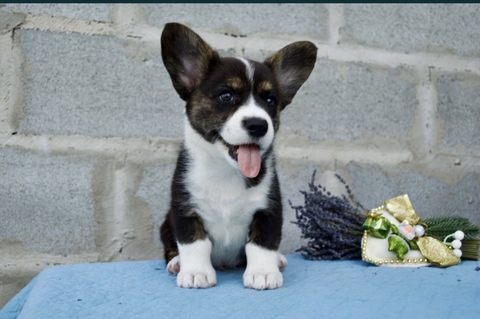The Cardigan Welsh Corgi is a small herding sheepdog with an elongated body and short, strong legs, which has a strong external resemblance to the Pembroke Welsh Corgi. The breed was bred in England, has a calm and friendly character. These are wonderful companions of small size with innate charm that will not leave anyone indifferent. They are distinguished by their energy and perseverance, as well as an aristocratic character, due to which their popularity only grows over time.
сontents
History of the breed
The Cardigan Welsh Corgi is a very ancient and very rare breed of dog that originates from Wales, that is, from England, is an indigenous breed of the Welsh county of Cardiganshire (Ceredigion). It is believed that in order to breed an unpretentious shepherd dog, local farmers crossed the ancestors of the Welsh Corgi with dachshund-like dogs, which greatly affected the exterior of the animals. In particular, the body of the shepherd dogs became longer, and their legs were significantly shorter. It is believed that the ancient Celtic tribes kept these dogs and highly valued them. Later, in the Middle Ages, when the Vikings landed in the territory of modern England, Welsh Corgi dogs were actively used by local residents in many areas of life.
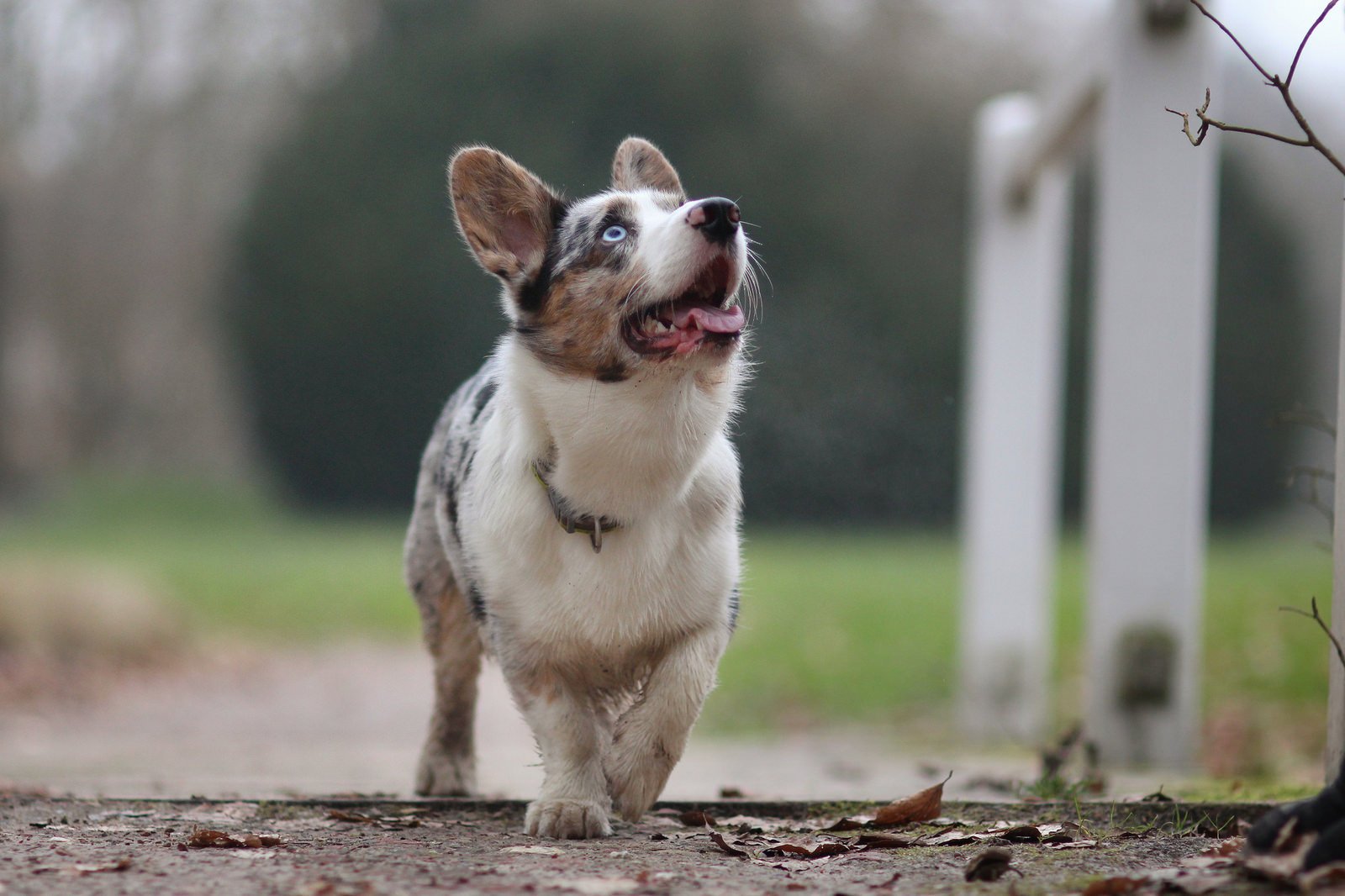
Despite their small size, these dogs were excellent herders for various types of livestock and also performed guarding functions. In addition, their wonderful character made them excellent human companions. Another function not quite typical for a dog, which was performed by corgis in the medieval world, was hunting rodents and small wild animals that encroached on grain, chickens or geese.
There was even an ancient Welsh law that protected these animals – for stealing a dog or killing it, a significant fine was provided, and, in some cases, physical punishment in the square. Some researchers believe that corgis were crossed with small Nordic dogs like the spitz, which were brought by the Vikings during the invasion. Thanks to this, the Pembroke Welsh Corgi breed was born.
The British Cardigan Welsh Corgi Association was founded in 1926, although these animals have been shown at dog shows since 1919. At that time, there was no separation between the Cardigan and Pembroke Welsh Corgi breeds, and they interbred freely. The division of the breeds took place in 1934, at the suggestion of the British Kennel Club, and in 1935 the American Kennel Club also recognized the Cardigan and Pembroke as different breeds.
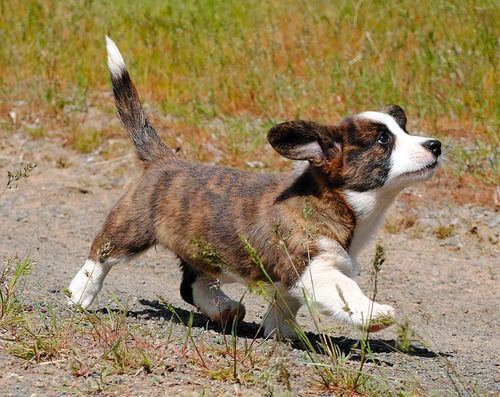
Translated from the ancient Welsh language, “corgi” means a dwarf dog. There is a legend that fairies ride small magical dogs to hunt, and if someone wants to find out about treasures, they must make friends with a dog. Because, of course, you can’t make friends with a fairy, because she lives in a different space.
Cardigan Welsh Corgis are very expensive and rare dogs. In 2006, the breed was recognized by dog breed associations as being on the verge of extinction. However, by 2016, the number of animals had increased dramatically, which removed the status of a living curiosity from the Cardigan Welsh Corgi.
Description.
Cardigan Welsh Corgis are agile, long-bodied “gentlemen” with a soft topline and tiny, strong legs. In appearance, these stocky cuties are noticeably larger and more bony than Pembroke Welsh Corgis. As an example: the average Pembroke weighs 10-12 kg, while the body weight of natives of the Keredigion can reach 14-17 kg. In general, there are much more differences between these two breeds than it seems at first glance. For example, the Cardi is dominated by dachshund genes, so they have slightly curved legs, a massive chest, and a smoother silhouette.
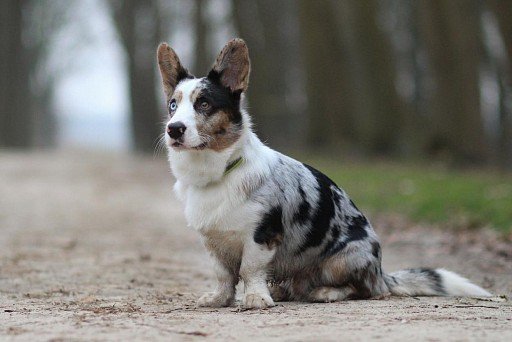
Cardigan Welsh Corgis are working dogs that were bred not for shows, but for gray working days. It is not surprising that Pembrokas, which were born a little later and were the “product” of crossing a Spitz with a Welsh Corgi, are inferior to them in working characteristics and endurance, but at the same time they are superior in terms of external charm.
An interesting fact: until recently, the Cardigan could be identified by its lush fox tail, which was traditionally shortened for Pembrokas. However, after European breeders abandoned the cropping, it became more difficult to distinguish the animals. However, if you look closely, you will notice that Pembrokeshire sheepdogs have a shorter tail (many years of crossbreeding of short-tailed individuals with tailless ones have made their mark) and less luxurious.
An interesting fact is that the name of the breed comes from the Welsh language, in which “Cor” means “dwarf” and “Gi” translates as “dog”
Features of the breed
Active and loyal, they can become the best friend for anyone. They fascinate with their intelligent look and unique “wagging” gait. They are excellent companions for active people. They are easy to train in an entertaining way. They appreciate any manifestation of affection and are suitable even for keeping in a fairly spacious apartment, provided they are properly exercised.
Head. Cardigan Welsh Corgis have a very well-proportioned head with a moderately elongated muzzle and a broad skull that tapers toward the eyes.
Teeth and jaws. The jaws of the Cardigan Welsh Corgi are strong, strong, with a scissor-like or horizontal bite (the first option is preferred).
Nose. The lobe is black, not too large, but not miniature.
Eyes. Shepherd’s eyes are wide-set, with well-defined corners, not round. The shade of the iris is dark. For individuals with marbled coats, blue or blue-spotted eyes are acceptable.
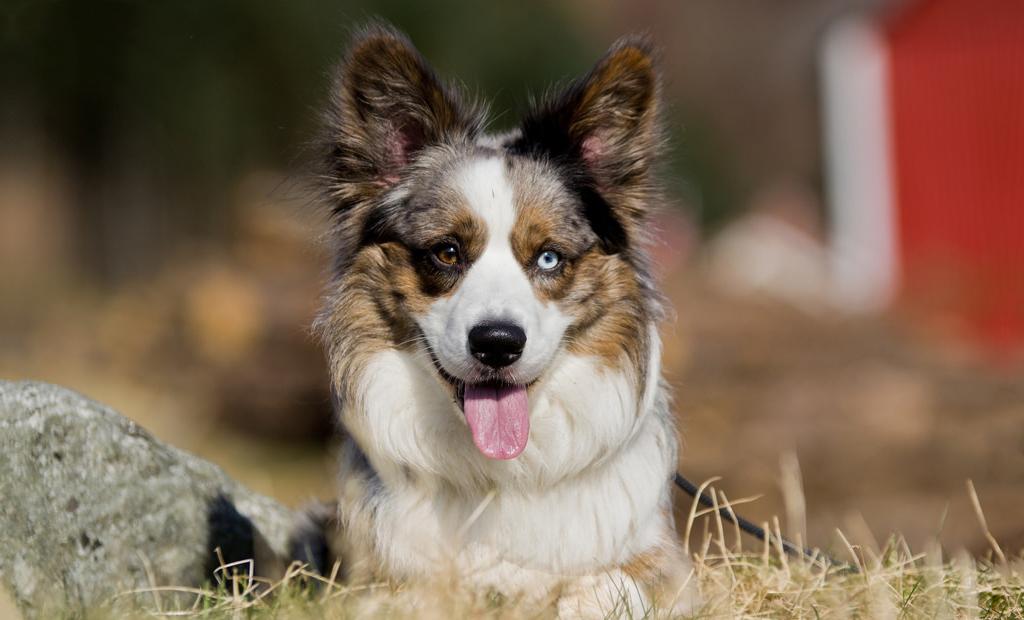
Ears. The Cardigan Welsh Corgi has large, erect ears with rounded tips, which are tilted forward in an alert dog and slightly apart in a dog at rest.
Neck. Decent length, muscular, passing into the relief shoulders.
Body. The body of the Cardi should be long, with a well-defined topline, without bulges or sagging.
Paws. Despite the fact that the legs of this breed’s representatives look like toy legs, they have sufficient strength and provide a good impetus when running. The feet of the Cardigan Welsh Corgi are large, rounded, with plump pads. The front paws are slightly turned outward, which is especially noticeable when looking at the dog from the front.
Tail. The correct tail for the Cardigan Welsh Corgi is low-set, lowered down. In an excited dog, the tail can be slightly raised (the best option is to the level of the croup or slightly higher), while it should not be rolled into a bagel and thrown on its back.
Coat. The smooth, tight-fitting “coats” of Welsh Corgi Cardigans are formed by moderately stiff hair of medium length and a thick layer of undercoat. The dog’s coat should be smooth, but not silky, and certainly not stiff as wire. A Shepherd Dog whose coat is too fluffy and soft is considered defective and is called a Fluffy.
Color. Breed standards are less demanding on the color of cardigan wool than on the color of pembroke wool. Simply put, representatives of this type of Welsh Corgi have the right to any type of color, including tiger and blue merle. The presence of white markings on the body is also not punishable by show specialists. The main thing is that they do not dominate the main shade.
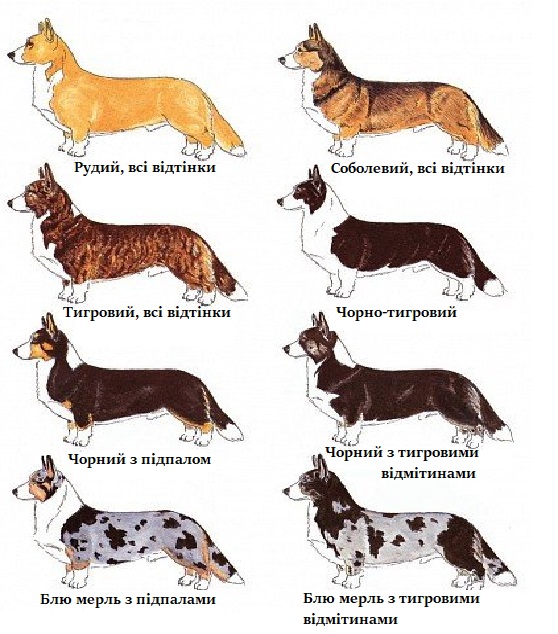
Breed standard
The whole appearance of the cardigan inspires respect. It is larger than the Pembroke. It has not only a longer body but also legs. Longer limbs make the dog more efficient. The head has a noble outline; the dog holds it high and proud. The ears are large and erect. The muzzle is fox-like, but more voluminous than that of the Pembroke. The bite is scissor-like. The chest is wide and the back is strong.
The coat can be of medium length or short. There is a thick undercoat. The coat has water-repellent properties, which saves the dog in rainy or snowy weather. Color: Any color with or without white markings is allowed. In any color, white should not be the main color.
Weight: males 14-17 kg, females 12-15 kg
Height (height at the withers): males 27-32 cm, females 25-30 cm
Life expectancy: 12-15 years
Disqualifying defects:
- Ears drooping or hanging down.
- White spots on the body that prevail over the main color.
- Completely blue or unevenly colored iris (not valid in the case of marbled animals).
- Lobe of any color except black.
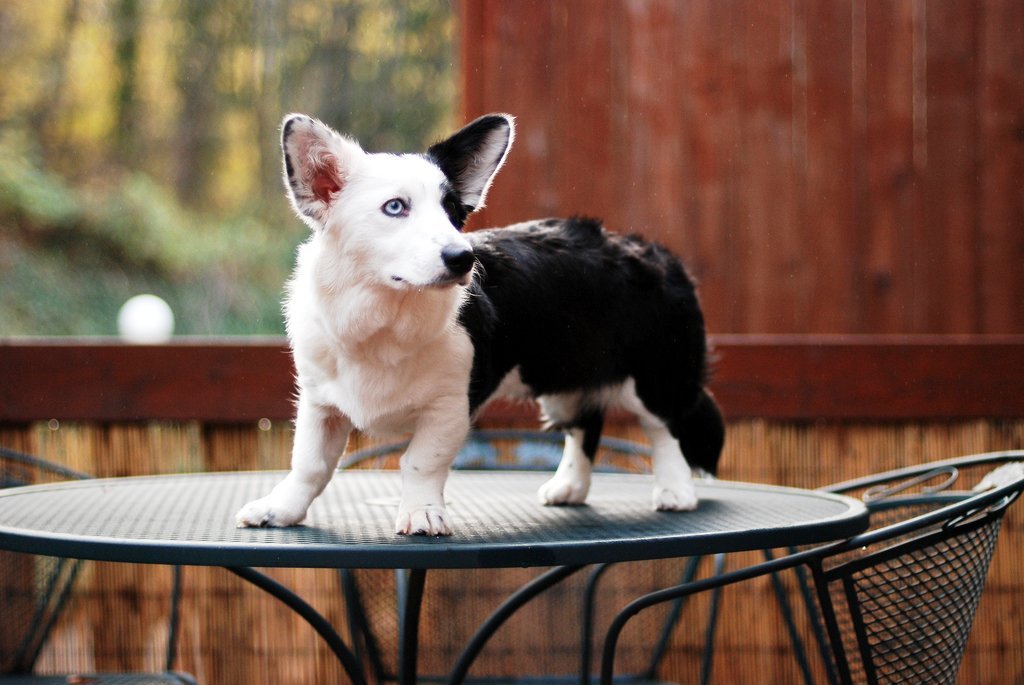
The character of the Corgi Cardigan
Calmness, bordering on mild phlegmatic, good-naturedness, and a great sense of humor are the three main qualities that define the character of the Cardigan Welsh Corgi. These cute short-legged dogs easily get along with anyone, and they are almost unfamiliar with such a feeling as jealousy. The only thing is that, unlike Pembrokas, Cardies don’t trust strangers very much and sometimes don’t mind scolding them. At the same time, in ordinary life, shepherds, if they are properly trained, make noise rarely and only for good reasons.
Compared to impulsive Pembrokas, Cardigan Welsh Corgis are restraint itself. They are quite energetic, but not hyperactive, sociable, but not intrusive, compliant, but not to the detriment of self-esteem. The best friends for a dog are the members of the family in which he lives, so the Cardigan Welsh Corgi is always happy to play with the kids, lie on the couch next to the owner watching a TV show or run around the park with him. In general, Cardies are very dependent on their owners, but this feature should not be associated with a lack of intellectual abilities. In fact, Cardigan Welsh Corgis are intelligent and perceptive creatures; it’s just that after centuries of working side by side with humans, they have practically lost their desire for independence. On the other hand, these cuties are not characterized by ambition, and they will never try to put themselves above their master.
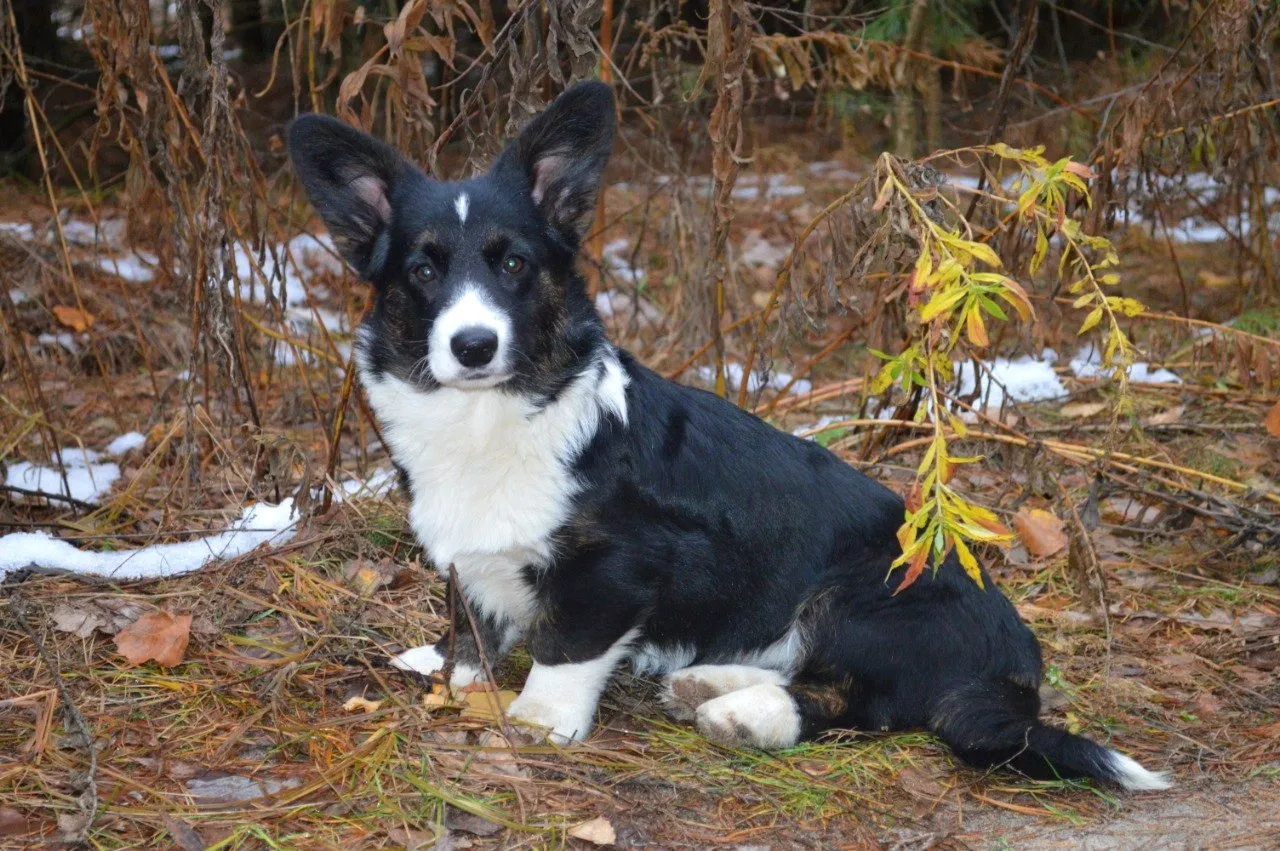
Despite the fact that today’s Welsh Corgi Cardigans have practically said goodbye to herding, their ancestral instincts will remind them of themselves. In particular, modern cardies no longer guard cows and sheep, but family members. This is especially evident in their relationships with children. A kid who deviates from the desired trajectory and goes beyond the boundaries of the dog’s imagination will be lightly bitten on the legs. From the outside, it looks funny, but it is better not to forget that while you are laughing and filming the “great confrontation” on video, the Cardigan Welsh Corgi takes it as encouragement and will try harder and bite even harder next time.
Cardigan Corgi puppies
Cardigan Welsh Corgis are somewhat inferior in popularity and demand to Pembrokas, so there are not many kennels that breed them. Take this fact into account and approach the choice of a pet carefully, armed with an appearance standard, or even better, enlist the support of a specialist from a kennel association.
How to choose a puppy
When choosing a Cardigan puppy, we recommend that you follow a few rules:
- Cardigan Welsh Corgi dogs are more trusting and diligent and are more willing to learn. Bitches are more cunning and flexible, so it is easier for them to adapt to the owner’s mood.
- Cardies inherit the athletic abilities of their parents, so if you need a future agility champion, ask the breeder for working diplomas of their ancestors.
- Responsible breeders usually test for dysplasia in the bitch and dog they plan to breed. Be on the safe side and ask the seller for the test results to protect yourself from buying a puppy with a bad heritage.
- The optimal age for selling/buying a Welsh Corgi puppy is 8-12 weeks. Despite the fact that dog clubs allow 45-day-old puppies to be put up for sale, self-respecting kennels do not use this privilege, preferring to keep the dog a little longer so that it receives the necessary vaccinations and grows stronger.
- It’s best to get puppies from kennels that practice outdoor rearing. This means that the kids will not be locked in cramped cages and will have enough space to play and develop.
Remember: experienced breeders and kennels take the sale of their wards very seriously and rarely offer bargaining or puppies for reservation. The seller’s offer to “negotiate” the price is an alarming signal, because such concessions are usually made if the dog has serious defects that you have not yet had time to see.
The cost of puppies
By definition, a Cardigan Welsh Corgi with a normal pedigree, all the necessary vaccinations, and a chip (brand) cannot be cheap.
Pet-class puppies will cost you about $450-600, breed-class puppies will cost from $600-700, and show-class puppies will cost at least $1000.
Mating (mating) of the Cardigan Corgi
The first estrus comes at 7-8 months, mating is done after 19 months. This age is most favorable for bearing healthy offspring. Crossbreeding with a Pembroke is prohibited.
The 15th day after the start of estrus is suitable for conception. First, the pair is walked together to reduce the stress factor during subsequent fertilization. Then the bitch is brought to the male and mated by hand.
A healthy female bears puppies for 2 to 2.5 months. On the third week after a successful mating, a rounded belly and enlarged nipples will already be noticeable. Childbirth can be complicated, so you need to make an appointment with your veterinarian in advance. The litter contains 3 to 8 newborn puppies.
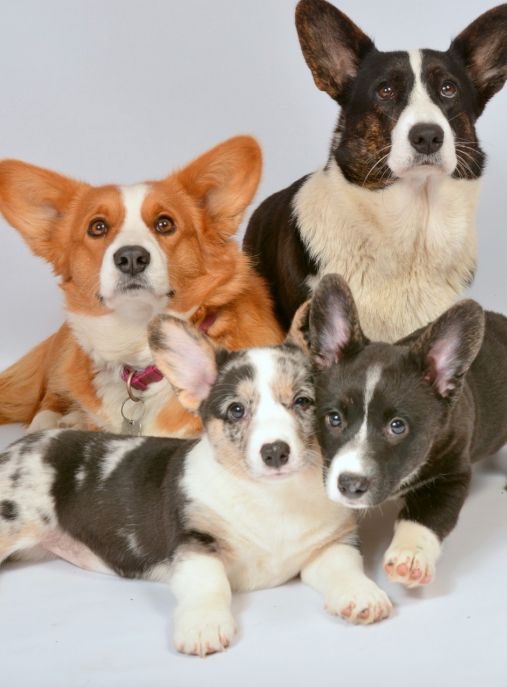
Maintenance and care
The cakes are unpretentious. But they need physical activity. Therefore, it is better for them to live in the country. With regular long walks and training, they can live in a metropolis.
Due to their relatively long back and short limbs, avoid accidental falls, even from a small height. Limit jumping. Otherwise, there will be serious consequences for the spine and expensive treatment.
When arranging a corner for a dog in a house or apartment, consider the anatomical features of the breed. For example, a mattress bed for a Cardigan Welsh Corgi should be strictly orthopedic, and the food bowl should be equipped with an adjustable stand so that the animal does not have to bend over too much.
The smooth, hard coat of the Cardigan Welsh Corgi has dirt- and water-repellent functions, so it is better not to abuse full bathing with this breed. It is recommended to organize bath days no more often than once every three months (unless you have a show dog), and choose a shampoo specifically for coarse hair.
Cardigan Welsh Corgis shed intensively twice a year. The first adult “shedding” of a teenage puppy is especially impressive in its scale, which often leads an inexperienced owner to a state of shock. Do not be afraid of this: with age, everything will settle down, and the cardigan will shed no more or less than the average shepherd. As for the daily hair care of your pet, an arsenal of combs will help you. A massage brush, a fluff rake, a long-toothed comb – you will have to spend money on these items because you will have to comb the representatives of this breed every day. In addition, once a week, the Cardi will also need to have its undercoat thoroughly worked out.
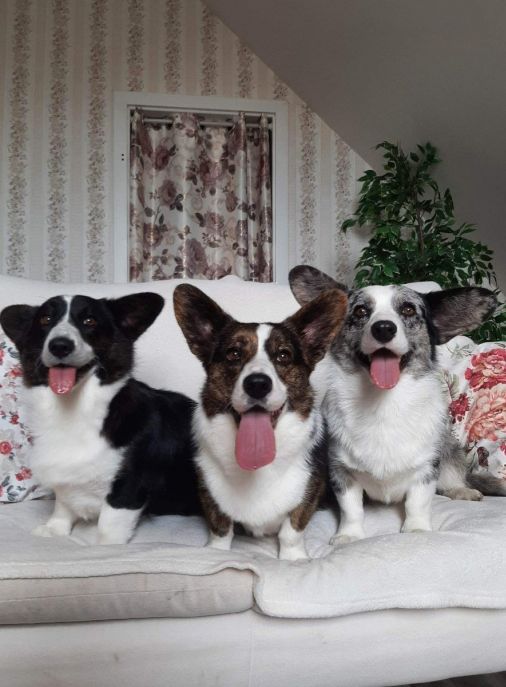
Ears are cleaned as needed with good old-fashioned veterinary lotion and cotton swabs. Cardigan Welsh Corgis’ nails, on the other hand, will need to be trimmed more often (optimally, 2 times a month), as they grow quickly and often become layered. You should not neglect such an unpleasant procedure for both the owner and the dog as brushing their teeth. But it’s better to do it as carefully as possible, as shepherds’ teeth are very sensitive.
The Cardigan Welsh Corgi is an energetic and agile dog, but even its internal “battery” has its limit, so do not push your pet to exhaustion with daily training. The best option for exercise: walks at a lively, relaxed pace twice a day and three times a week, agility, freestyle, or just active games in the fresh air.
In the summer, you will have to find a shadier place to walk them, as their thick and dense coat can make them overheat in the sun. During the off-season, another problem comes up – dirt that accumulates on the dog’s belly during walks (thanks to short legs). So if you don’t want to drag your pet to the bathroom after every time he goes out, make a raincoat for him according to his individual size – pet stores have an extremely poor range of clothing for this breed.
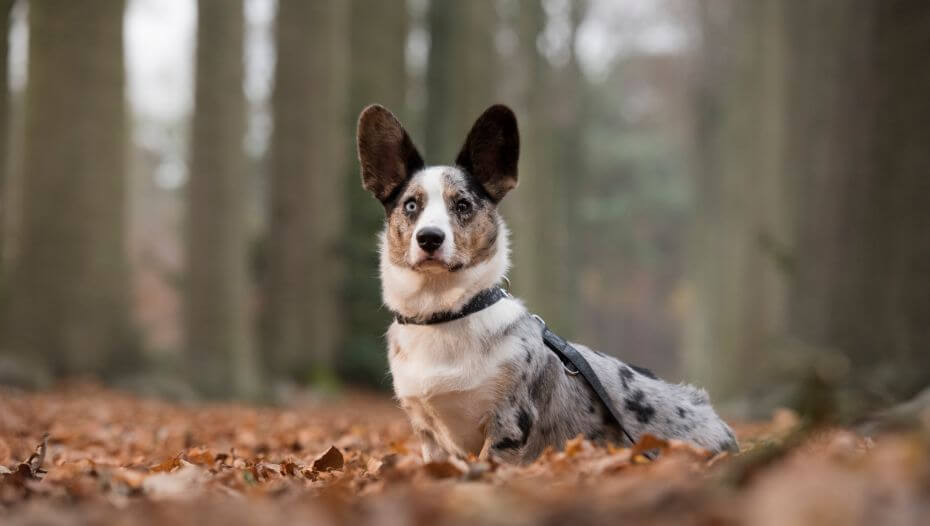
When choosing four-legged playmates for your Cardigan Welsh Corgi, make sure that they are small breeds. The fact is that Cardigans are very bold by nature, and in the event of a conflict, the size of the opponent does not deter them at all. Accordingly, if your ward walks in the company of a Caucasian, you are taking a big risk, because for a wolfhound, such a shorty is an annoying misunderstanding that can be easily removed from the path with a snap of the jaws.
Training and education
Cardigans show themselves on the most positive side in training Welsh Corgis. The main thing is not to overdo it with seriousness and monotony. The Cardigan Welsh Corgi is a highly specialized sheepdog that is not at all intended for service and security activities.
Start training and socializing the puppy from the first minutes of its appearance in your home, and not at the age of 6 months, as advised by experts from Internet forums:
- familiarization with the home toilet (litter box, diaper) and the ability to use it;
- training to the leash and collar;
- teaching obedience and setting boundaries.
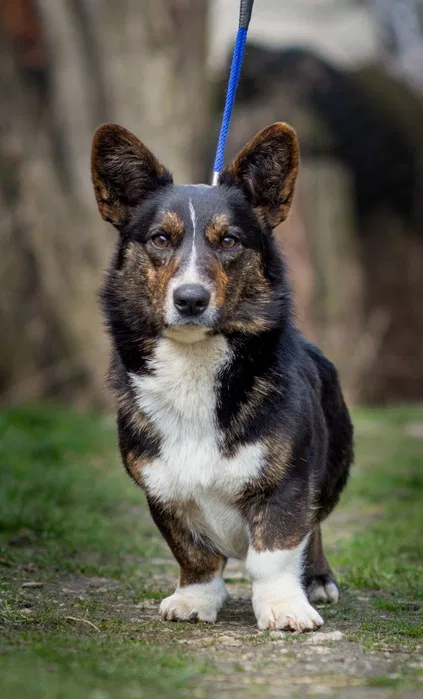
At 3 months of age, you can and should begin to introduce the puppy to the world around him so that he does not get the impression that he is the only four-legged creature on the planet. To do this, you need to walk more often in places where other animals (cats, dogs) run around, and also arrange meetings with people. At the same time, clearly explain to the baby that now the toilet for him is not only a litter box and diaper, but also the nearest bushes.
At 4-5 months of age, the Cardigan Welsh Corgi is smart enough to learn a minimum set of commands: “Come!”, ‘sit!’, ‘down!’. In addition, a 4-month-old puppy should understand that barking for no reason is the height of ill-manneredness, and picking up foreign objects from the ground, even if they smell tempting, is not worthy of a true Welsh Shepherd.
Welsh Corgi cardigan training
Important: It is not forbidden to teach Cardigan circus and acrobatic performances, if they are not jumping. Climbing on horizontal surfaces and diving down from them is strictly contraindicated for representatives of this breed (they have legs, if you remember).
When training six-month-olds, take into account the peculiarities of the transitional age. During this period, the Cardigan Welsh Corgi may deliberately disobey you and pretend not to understand. This breed is not prone to dominance, but a 6-month-old puppy will definitely try to bargain for some concessions. In addition, he may start spoiling shoes again, although three months ago he showed complete indifference to such things.
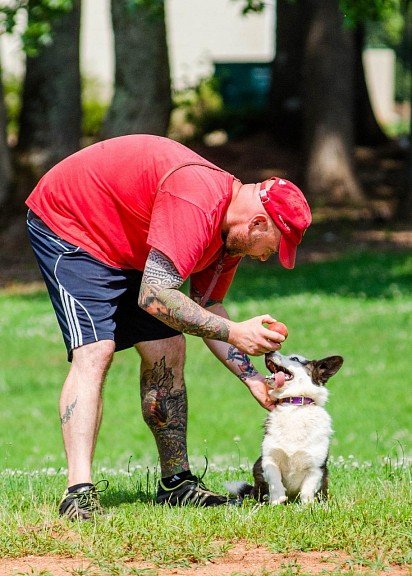
Nutrition.
Cardigan Welsh Corgis are happy to eat dry food, so if the owner has neither the time nor the desire to prepare a balanced diet for their pet, this option can be a good help. However, in some cases, the dog’s body can react to store-bought “drying” with allergies, changes in coat color (white hair becomes pink), and intestinal problems.
With natural food, things are easier. Feed the Cardigan lean frozen meat at the rate of 20 g of product per kilogram of dog body weight, as well as liquid cereal porridge cooked in meat broth, and your pet will be healthy and happy. Just don’t overdo it, because Cardigan Welsh Corgis are gluttons who love to fill their stomachs to the brim and ask for more.
Foods that should be included in the diet of a Cardigan Welsh Corgi
- low-fat kefir, ryazhenka, cottage cheese;
- vegetables (carrots, zucchini);
- apples;
- Vegetable oil (as an additive, but not more than 1 tbsp per day);
- rice and buckwheat cereals.
- 1-2 times a week, the cardigan menu can be varied with offal, boiled chicken, fish fillet, egg, and bread croutons.
Under the ban:
- tomatoes, eggplants, potatoes, grapes;
- mushrooms
- legumes;
- pastries;
- nuts
- sausage products;
- sour cream, milk and any fatty dairy products;
- millet and semolina cereals;
- poultry and tubular bones;
- pasta
- sweets.
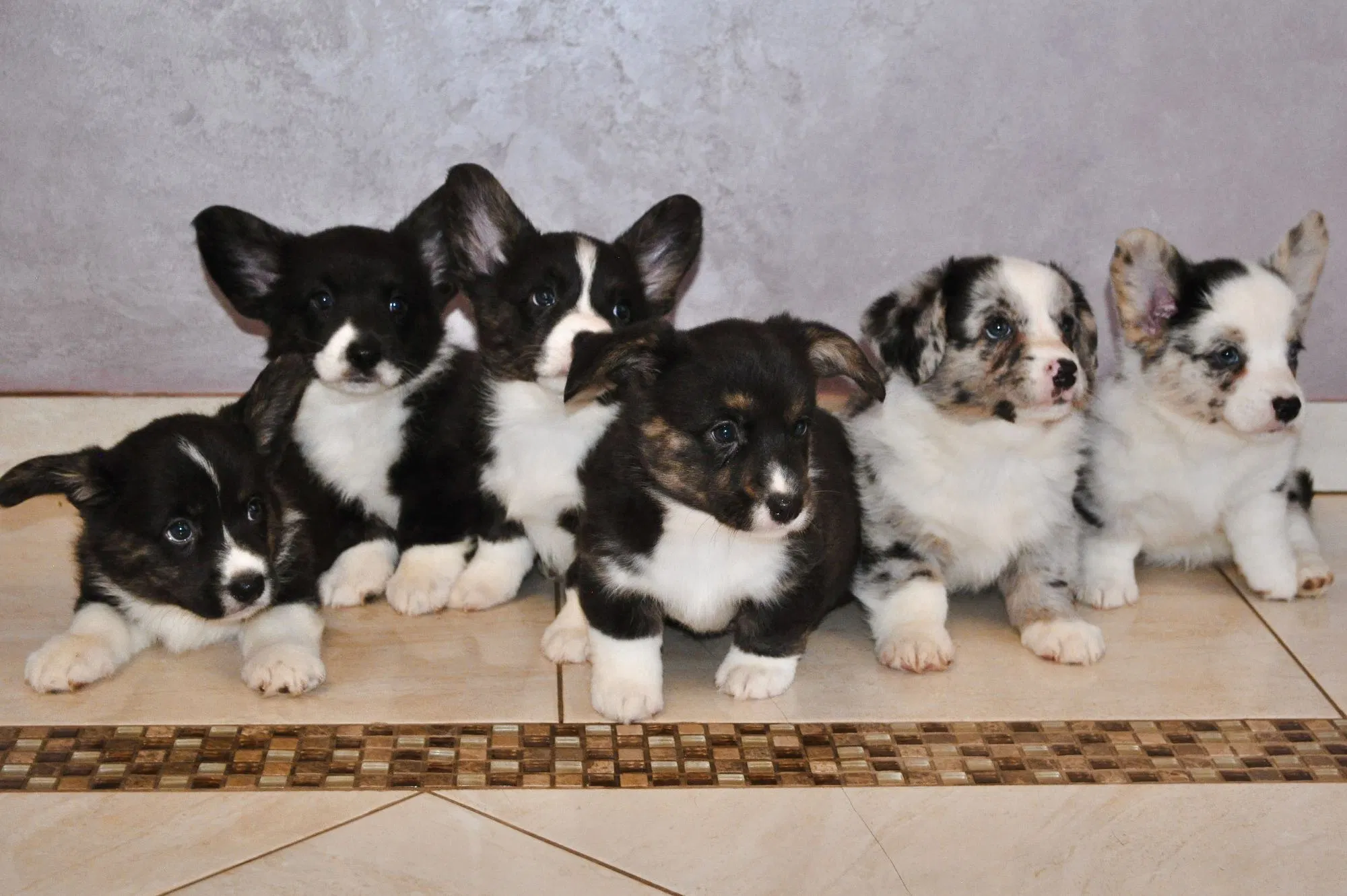
Health and Diseases
Like all dogs, the Cardigan Welsh Corgi breed has some diseases, including hereditary ones.
These include:
- hip dysplasia;
- displacement and other problems with the intervertebral discs – this is a problem not only for this breed, but also, for example, in dachshunds, due to their long back, which can eventually lead to paralysis;
- progressive atrophy of the retina;
- dental caries, gingivitis, tartar.
Most diseases are inherited from the mother and father (glaucoma, cataracts, dysplasia). It is necessary to take the pet for preventive examinations every year.
The metabolism of Cardigan Welsh Corgis is also outstanding, so they often overeat and, as a result, quickly become fat. Among other things, Cardigan Welsh Corgis are prone to food allergies and various eczema.
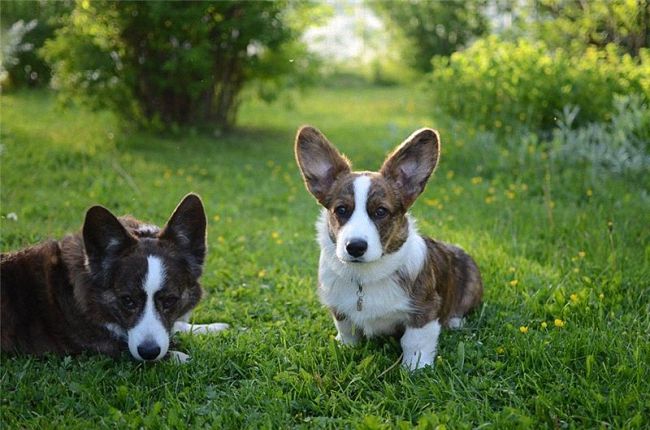
Pros and cons of the breed
If you decide to buy a Welsh Corgi puppy, you should familiarize yourself with the advantages and disadvantages of this breed. This will help you make the final decision about your pet.
Advantages:
- Devotion.
- Cheerfulness.
- Easy to care for.
- Unpretentiousness to food.
- Activity.
- Ability to adapt to any conditions.
- Quick learning curve.
- A reverent attitude towards children.
- Rarely barks.
Cons:
- The need for long, daily walks.
- Independence, stubbornness.
- The coat requires careful maintenance.
- Frequent complications during childbirth.
- Does not tolerate heat.
- Tendency to overeat
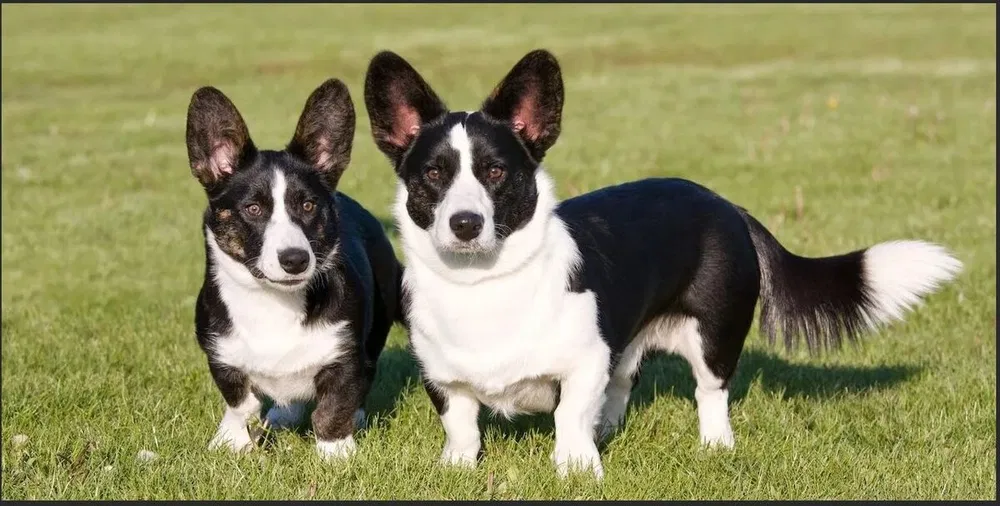
Little wise friends will not leave anyone indifferent. They will bring a lot of bright emotions and useful activities to your life. With proper care, love and affection, you will find a friend for many years.


